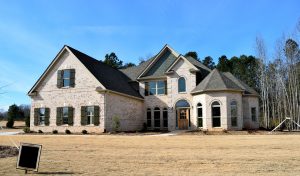When I was working for non-Japanese financial institution and managed Japan portfolio, sometimes non-Japanese colleagues were surprised to find that in Japan the tenure of land and building can be different.
This is one of the tricky parts in real estate investment in Japan. Ground lease structure looks a bit complicated and some investors are interested in managing only the land portion. For instance, in Okinawa, where I live, there are considerable number of landlords who hold the land in the site leased to the US base. They have inherited such lands from ancestors and landlord status have delivered them a sort of unearned income. Such owner’s tenure status we call Sokochi, soko means the basement and chi means the land. Under Japanese civil code, Sokocih implies the legal owner’s status by which the owner can generate the rental revenue from the ground lease.
Say, for past ten years, several players, who mainly deal with such land portions as investment products, have appeared in the market. I would like to analyze the pros and cons of that product from middle to long term investment viewpoints.

The pros and cons of Sokochi investment are following.
Pros:
1 Stable
2 Cheap cost(operational expense)
3 Easy to manage
Cons:
1 Tenant credit risk
2 Compressed yield
3 Exit risk
Pros

1 Stable
Needless to say, and demonstrated in the military base land example, the land is leased to the counter part for relatively long term lease. The owner can expect the stable income from the business which the tenant is going to commit on the land.
2 Cheap cost(operational expense)
The building investment, the owner needs to consider vacancy void, maintenance fee, management fee, insurance, and capital expenditure. On the other hand, for the ground lease, the owner pays only the property tax on the land, no other expense occurs.
3 Easy to manage
Once you let the land to the tenant, almost no maintenance fee is considered, except for the initial legal cost.
Cons

1 Tenant credit risk
Road side shopping malls, restaurants, gas-stations, or hotels, those are the businesses which may fit this ground lease category. Depending on the market condition and economic environment, the business may not be feasible and the land would eventually be exposed to the risk: rent reduction, tenant evacuation, or financial burden caused by the tenant’s low credit.
2 Compressed yield
This has already been seen in Okinawa market. The more the investment scheme is spread and know to the potential owners, the harsher the competition gets. The land acquisition price increases and the yield gets compressed. Especially under the current bullish market, even for those exotic assets as Sokochi, the yield has been getting lower, taking into account the underlying risks.
3 Exit risk
Usually this ground lease scheme is arranged for the business which requires long term commitment such as road side businesses and infrastructures. Under Japanese law, the fixed term ground lease for the commercial use is stipulated up to 25 years. Over the time, the regions may be changed from growing population area to less populated area, as we have seen in several communities in the grater Tokyo region. Therefore, the exit market is hard to predict. When the tenant leaves, the probability to attract alternative tenant is uncertain and alternative use, or future market looks hard to anticipate. Therefore, the landlord has to bear in mind that this category of investment product should have such exit risk.
Conclusion
Sokochi type asset class is easy to manage, low cost, and stable on the other hand, the landlord considers tenant credit, return level and exit risks. For the location where we can expect alternative use, and the land occupied by a good credit tenant for long term may be the good investment product. Such land looks hardly found in the market unless some sudden economic environment change happens.
Further queries or doubts, please email to ytomizuka@abrilsjp.com
News Letter subscription is here










